The doughnuts come in all shapes and sizes. There’s an aerial view of a chocolate doughnut with colored sprinkles.
There’s a plump one with fruit jelly filling its center.
In one of the paintings, three Boston cream-esque doughnuts and an ivory-white cup of coffee hover on a blue background.
The paintings remind Lois Herring, 68, of her childhood and how her working-class mother would take her — on special occasions — to a doughnut shop three blocks from her Grand Rapids, Michigan, home.
After a tough stretch of years that included her husband’s death and a major stroke, those doughnuts are still providing her comfort and joy six decades later.
“Painting has really helped me,” said Herring, who speaks in short sentences because of difficulties after her stroke. “It helps with stress. I started painting four years ago after the stroke, and it keeps my mind off the stress.”
It’s also helped her physically.
“It has really helped me with my left hand,” she said. “I was very right-handed, but now I have to use my left-hand. It’s made a big difference.”
Painterly ways
Art therapy is a little-studied scientific area, but the limited research suggests it can be very effective.
A 2015 study showed art therapy led to stroke patients having better physical abilities, improved concentration and more confidence. A 2013 review of all published art-therapy studies concluded “art therapy was reported to have statistically significant positive effects,” especially with “depression, anxiety, low mood, trauma, distress, poor quality of life, inability to cope and low self-esteem.”
Herring, who lives full-time at the Spectrum Health Rehab and Nursing Center on Fuller Avenue, didn’t pick up a paint brush in her first 63 years of life.
Now, she paints three times a week.
In addition to doughnuts, she paints dogs and cats. She even does commission work, painting portraits of hospital employees’ pets when they bring in photos for her to look at.
RaNae Couture, art coordinator for Spectrum Health’s expressive arts program, said she’s seen incredible progress from Herring as she’s fallen in love with painting.
“After she had a stroke, she was going through a very difficult time dealing with that and with changes in her life: living at Fuller, being away from her family, and all the different changes that come from living at a long-term care facility,” Couture said. “And with all the rehab that she needed, with medical issues from stroke, there was a lot of life-changing — I don’t want to use the word ‘issues’ — but a lot of challenges after her stroke. There’s a lot of anger and depression associated with strokes. A lot of depression, and depression often comes out as anger.
“At the time, it was also not easy for her to focus and concentrate, which it takes to do art,” Couture said. “But she gradually … improved over the years with her concentration and focus. And we’ve just kind of worked with her, just working in the art studio the way she wants to.
“If she just wants to paint for five minutes, great,” Couture said. “If she paints for five minutes and then is just listening to music, that’s a great day.”
But over time, she has done more and more.
“And with that, she’s had an increase in happiness,” she said. “She’s more upbeat, less depressed, can carry on more conversations, and she’s becoming more trusting. … Her turnaround has been amazing.”
Others have taken notice. In May, Spectrum Health hosted an art show where it invited 400 people — staff, friends and family, among others — to view the work of the art therapy patients.
Herring sold 11 paintings at $30 apiece, mostly from her doughnut series.
“She was literally in tears she was so happy,” Couture said. “She’s a whole new person compared to what she was a year and a half ago. She’s got a much more positive outlook on life. I believe that through art and painting, making new friends in the art studio … she just has a whole better outlook on life than she did before.”
A stroke of happiness
Herring uses program volunteers to help her paint. She bounces ideas off them, watches YouTube videos with them and asks them questions about technique. In addition to doughnuts and dogs, she’s also branched out into flowers and landscapes.
Her speech has improved a lot in the past two years, she said, as she increases the volume and complexity of conversations with Couture, volunteers and other patients in the art therapy program.
She’s also grown more trusting, Couture said, as she develops relationships with people in the studio.
Herring said those relationships — and the paintings that come from those sessions — are her greatest joy.
“They make you feel like you’re somebody,” she said of the volunteers and other painters. “They want to help. … And when we had an art show, and those paintings sold, it made me feel great. It made me feel happy.”
Herring said she wishes she could show her husband the skills she’s acquired. In one painting, an adorable black-and-white dog stares earnestly off the canvas, flanked by two thick abstract lines and a soft red background.
The way the black and white are sharply split, and the two black dots for eyes, it slightly resembles a yin-and-yang symbol.
“He’d like the dog paintings the most,” Herring said of her husband. “He loved dogs.”
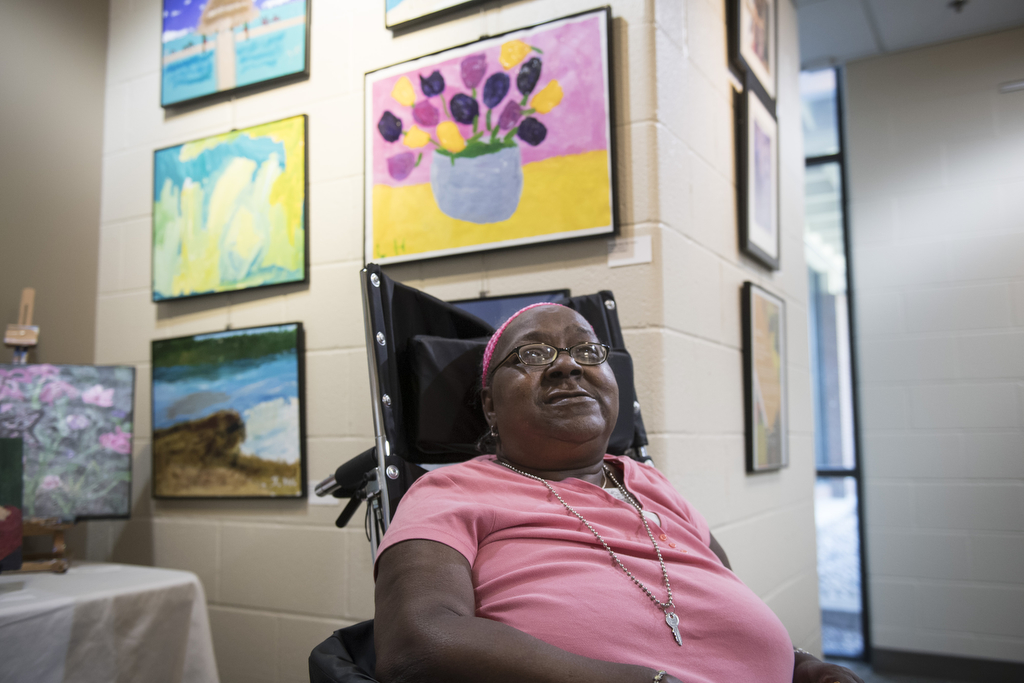
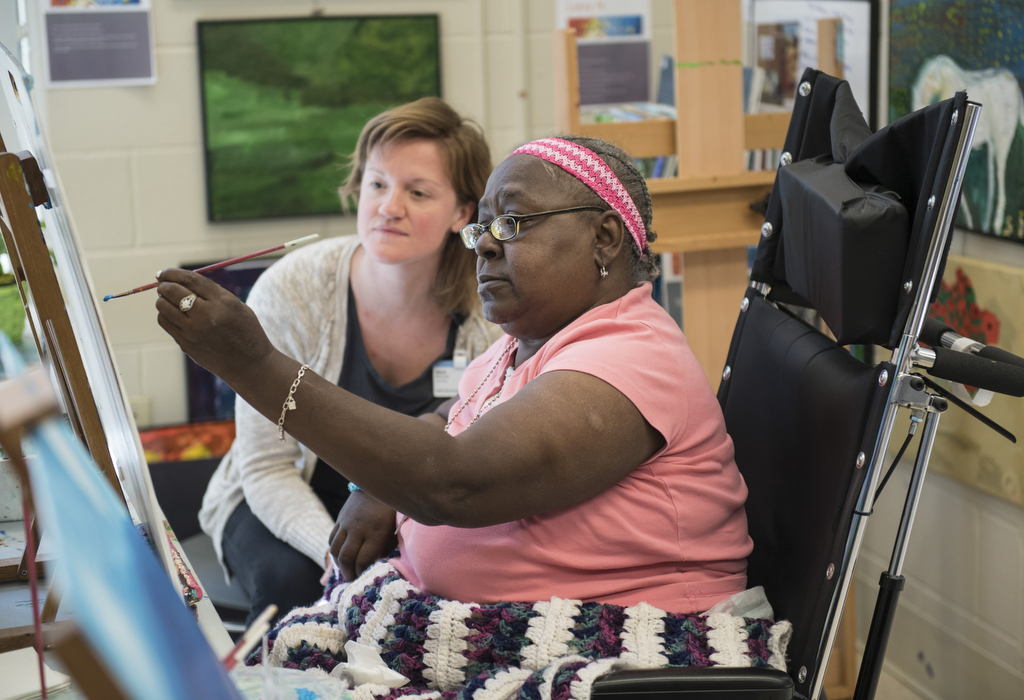
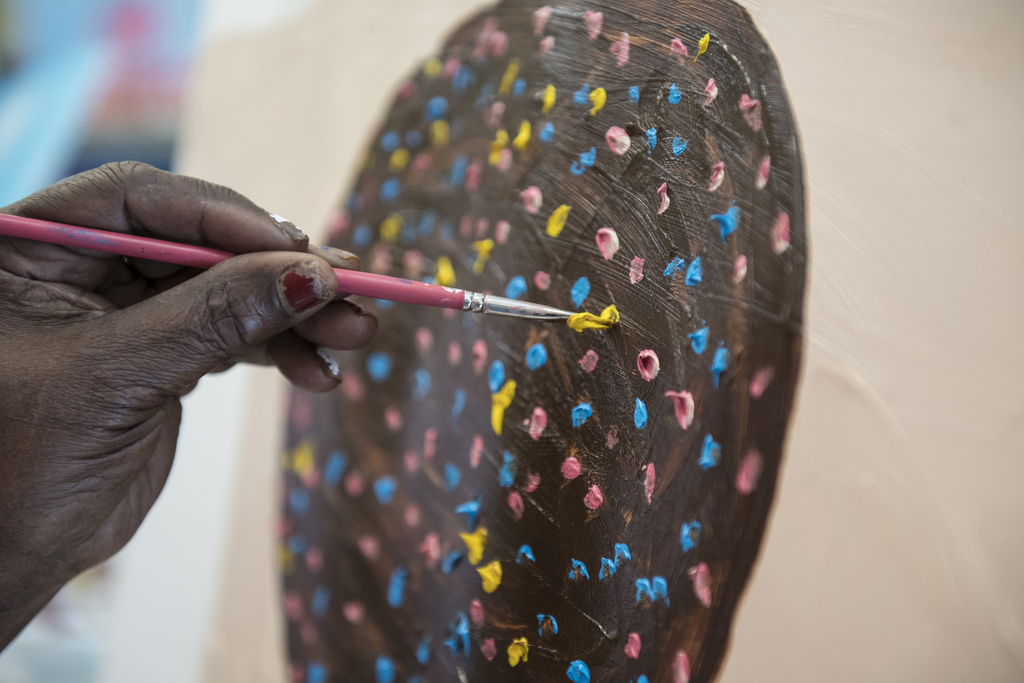
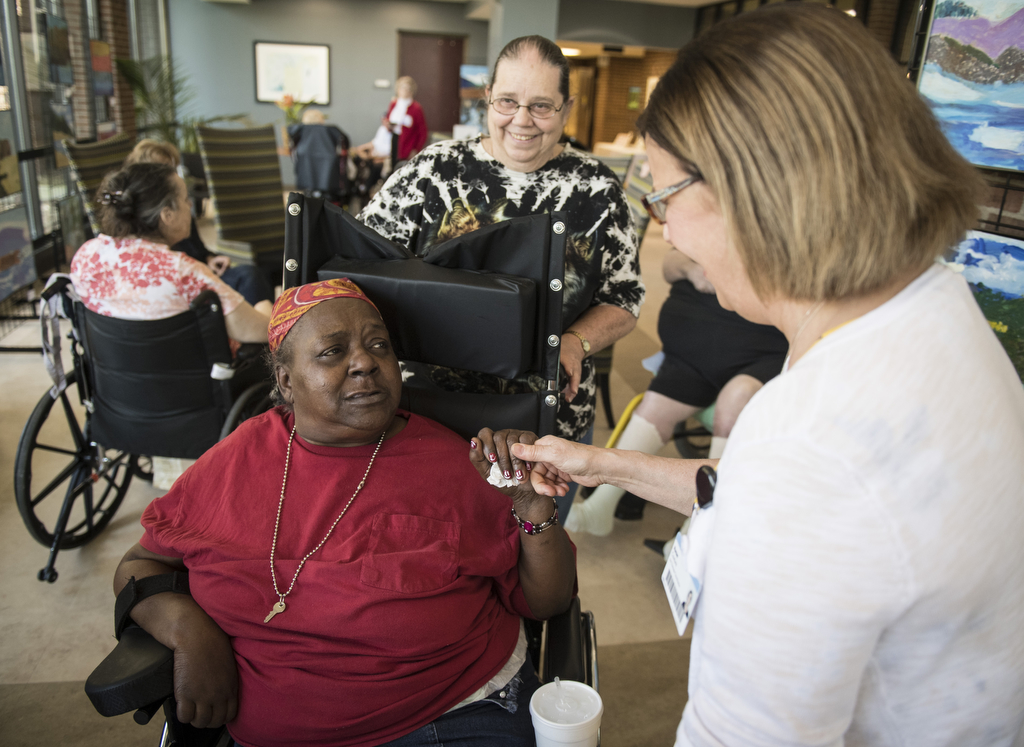

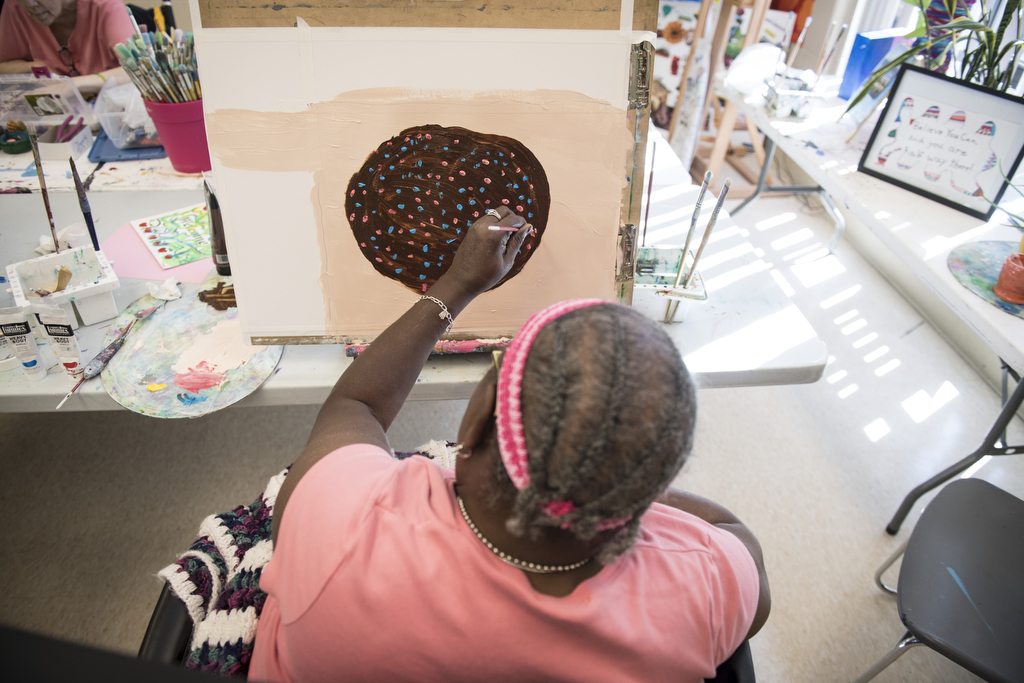


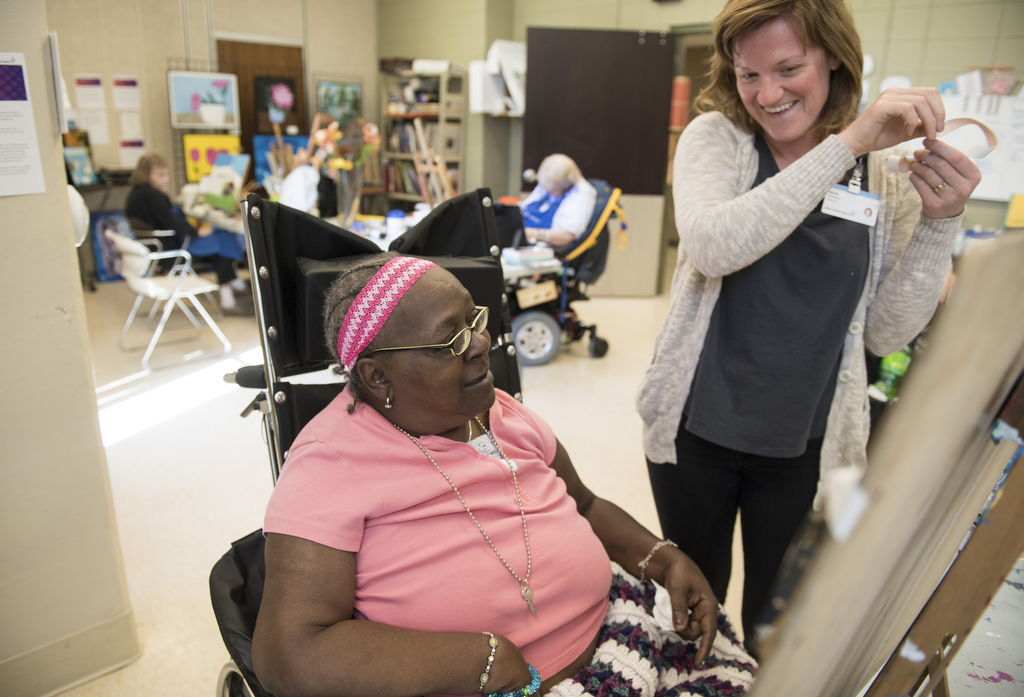

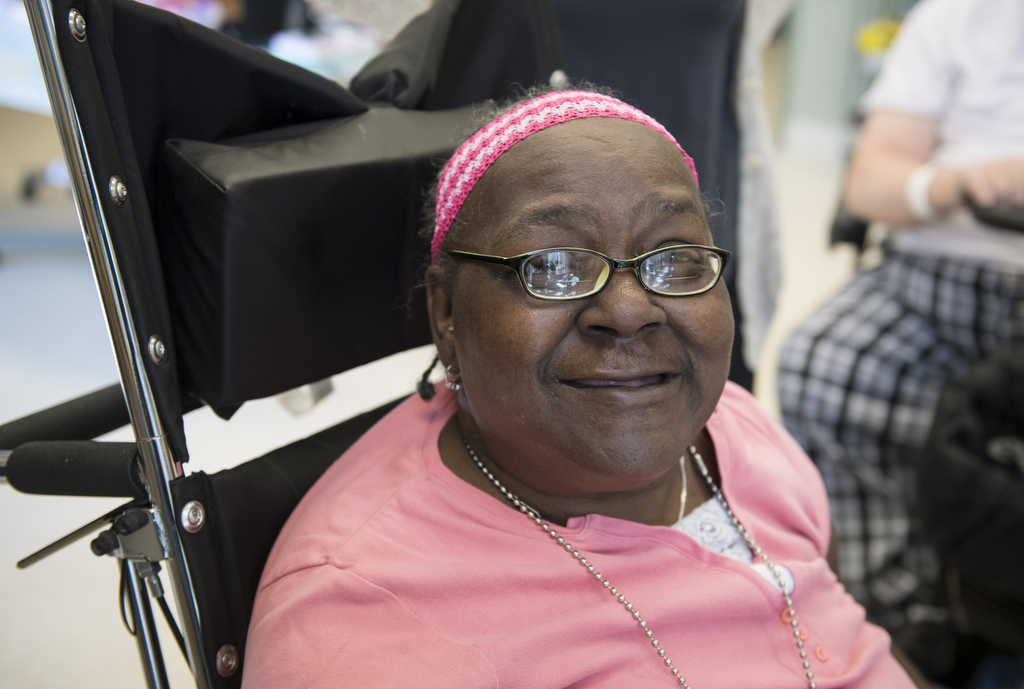

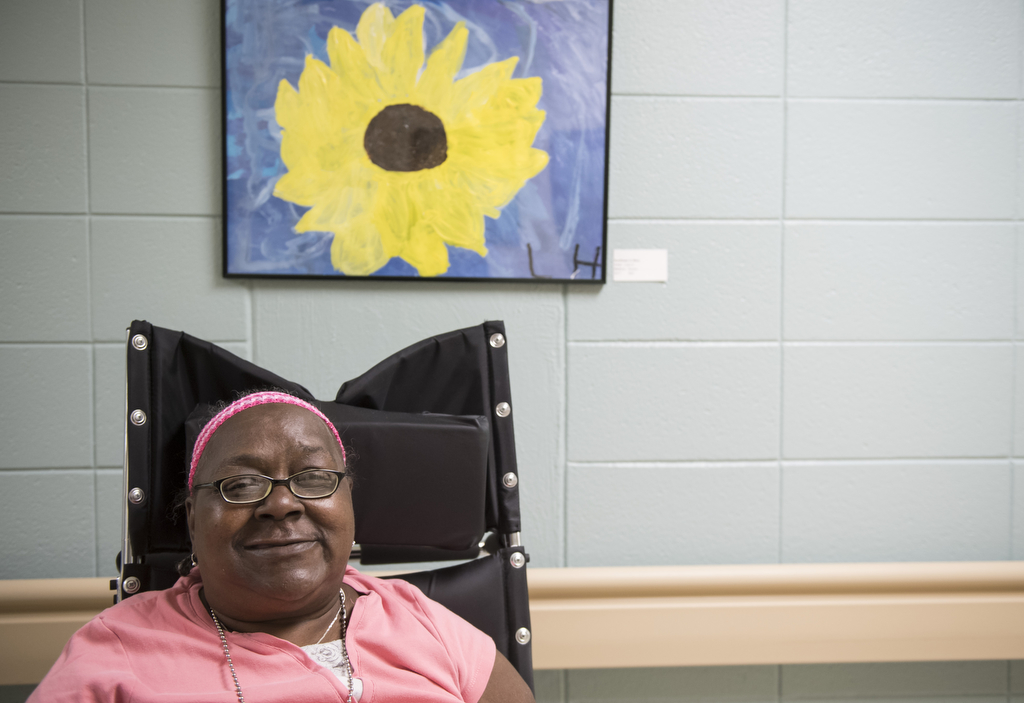
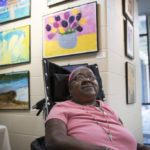



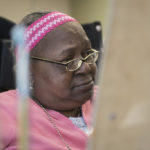
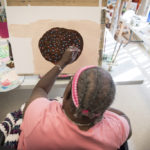







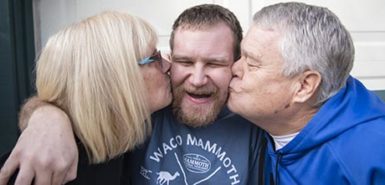 /a>
/a>
 /a>
/a>
 /a>
/a>